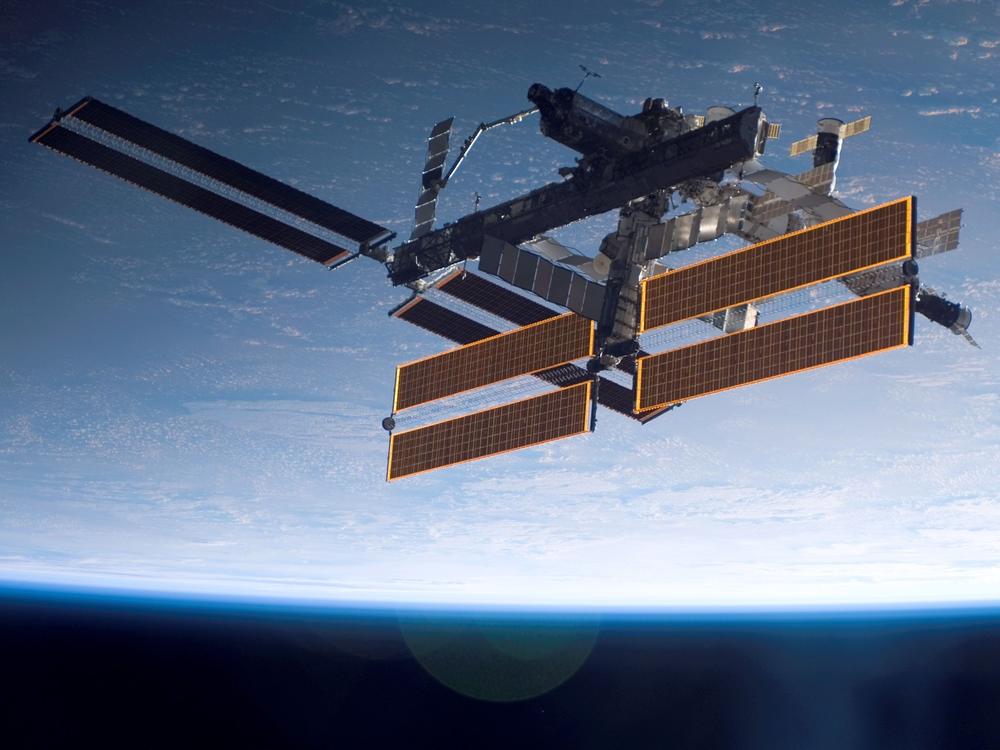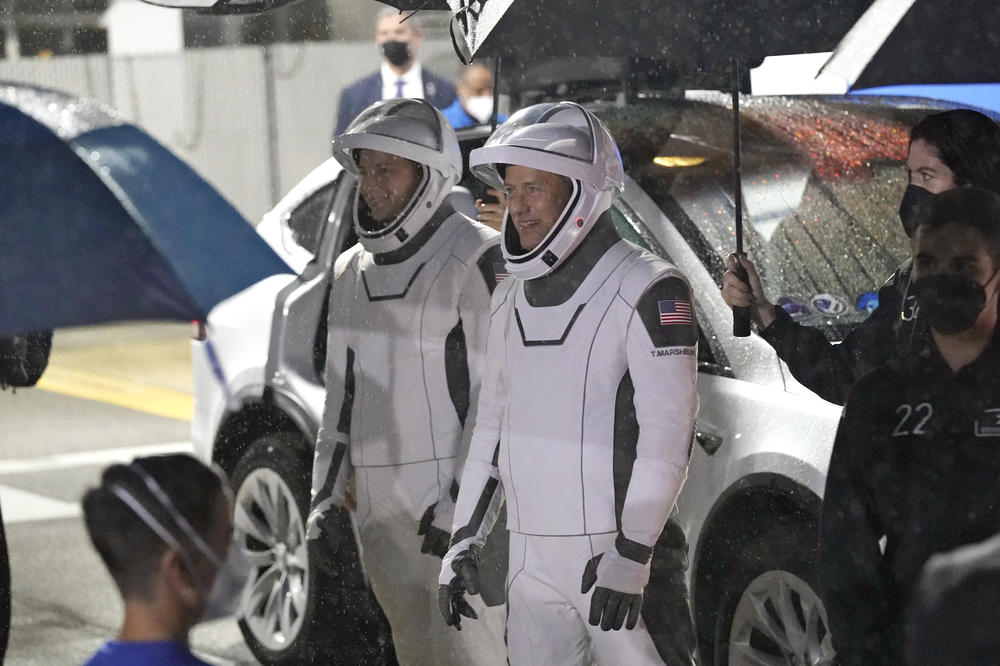Section Branding
Header Content
The threat of space debris delays a spacewalk by NASA astronauts
Primary Content
Two NASA astronauts were scheduled for a Tuesday morning spacewalk outside the International Space Station, but the possibility of space debris delayed their plans.
Astronauts Thomas Marshburn and Kayla Barron were scheduled to replace a faulty antenna at 7:10 a.m. EST, a fix that was expected to take about six and a half hours to complete. The spacewalk would have been the first of Barron's career.
NASA received a debris notification on Monday evening and decided to delay the spacewalk because of the lack of opportunity to assess the risk to astronauts.
It's unclear when the spacewalk will be rescheduled.
"NASA is gathering and assessing information about the risk and will share more information when we can," NASA spokesperson Stephanie Schierholz wrote in an email to NPR.
The faulty antenna lost the ability to send signals to Earth via NASA's Tracking and Data Relay Satellite System. The malfunction has limited effects on station operations, but mission managers wanted to fix the antenna to ensure there are back-up forms of communication, according to a press release.
Vincent LaCourt, NASA spacewalk flight director, said the faulty antenna was discovered mid-September. The timing allowed Marshburn and Barron to practice their spacewalk in NASA's Neutral Buoyancy Laboratory.
It's unclear if the debris that prompted the delay is from a Russian anti-satellite missile test two weeks ago that forced astronauts on the International Space Station to take shelter briefly. The U.S. condemned the test as "dangerous and irresponsible."
More than 27,000 pieces of debris are tracked by the Department of Defense's global Space Surveillance Network sensors. Some pieces of debris are too small to be tracked, but they still pose a threat to humans in space and robotic missions.
For instance, several space shuttle windows have been replaced after being damaged by millimeter-sized paint flecks traveling at high speeds.
Tien Le is an intern on NPR's News Desk.
Copyright 2021 NPR. To see more, visit https://www.npr.org.


